- Ford's long-running Expedition SUV is fully redesigned for 2025.
- Upgrades include a split-opening tailgate, a tech-heavy (but easy-to-use) interior, and impressive performance.
- The off-road-oriented Tremor is hugely capable.
2025 Ford Expedition First Drive: Redesigned and Redefined
Gunnin' for that No. 1 spot
Full-size truck-based SUVs have notable strengths compared to their crossover counterparts — greater towing capacity, an immense cargo hold and genuine off-road ability among them. But their inherent weaknesses mean they're not a one-size-fits-all solution. These SUVs' heavy-duty construction typically translates to ponderous handling with a brittle, uncomfortable ride and compromised interior packaging. And the only way to haul the prodigious mass up to speed is by throwing a gas-guzzling engine underhood.
But the redesigned 2025 Ford Expedition is different. This is the most well-rounded and least compromised large SUV I've driven in some time.
What makes it great?
As I look at the outside of the first Expedition I'm driving on this trip, I think, "Yup, here we go. Recipe for disaster." My Platinum tester with the Ultimate package has a behemoth body on a truck frame and it rides on 24-inch wheels. This combination should dog whistle to all chiropractors within a 10-mile radius. But this Expedition has a trick up its sleeve: an adaptive suspension that provides a cushy ride.
Instead of crashing over every bump or transmitting every road imperfection through my spine, against all odds, the Expedition just carries you through without being upset. You'll still feel a solid thunk through the cabin when crossing over pavement cracks that span across lanes, but without the shudder and flex of other large SUVs or pickup trucks. I can confidently say the adaptive dampers are worth adding, and you don't need to upgrade to the five-figure Ultimate package to get them. Just check the box for the $2,810 Driver's package and you get the fancy suspension plus a 22-speaker B&O Play audio system.
The well-tuned ride is the biggest and most welcome change for the new Expedition, but there's a lot beneath the surface. Technology was a focus of the previous Expedition — many versions came with a massive 15.5-inch vertical touchscreen, and Ford's BlueCruise hands-free driving system was available on Platinum models — and it plays an even more integral role now. The new 13.2-inch screen seems like a downgrade on paper, but the new horizontal orientation not only reduces the visual bulk of the center stack, it also avoids the "iPad stuck on the dash" design that often makes touchscreens look like an afterthought.
A giant center screen is also unnecessary because every Expedition now comes with a 24-inch digital display located at the base of the windshield. It replaces a traditional instrument panel and stretches from in front of the driver to the center stack — kind of like the screen in the new Lincoln Navigator or Nautilus, but cut in half. Though it doesn't span the entire dash, this screen remains a visually impressive piece. Thankfully, Ford didn't overdesign the interface by cramming all the information it projects in one area. Rather, the speed, audio track and map are given plenty of virtual space and large fonts so they are easy to find and read at a glance. Because the screen is already in the driver's line of sight, there's no need for an expensive head-up display. Everything feels very intuitive and well thought-out, including the flattened steering wheel top that allows an unobstructed view of the info panel.
What else is different from the last Expedition?
While the body is still boxy and slab-sided, the Expedition's front end has a new, rounded trapezoidal grille and headlight design that I like better than the outgoing model's rectangular motif. But more importantly, out back is a dual-tone hatch, with an upper black portion and a body-color lower section. This is to visually hint at the Expedition's new split tailgate; just like a fancy Range Rover, the lower bit folds down to aid loading items into and retrieving your gear from the cargo area. It also supports 500 pounds of weight, and you can even option a pair of seats for tailgating or resting before setting off on your next adventure.
Other new additions include a useful 40/20/40-split third row (included with the Expedition Active's 202A package and standard on all other trims), an available power-sliding center console and configurable exterior zone lighting. Ford is also changing its subscription plans. Every trim comes with a limited trial of both BlueCruise and its connected services apps — which includes Wi-Fi access, data and video streaming, among other features — but you can purchase both outright if you plan on keeping your Expedition for the long haul.
The good and not-so-good
Speaking of BlueCruise, the Expedition comes with the newest version of Ford's flagship hands-free driving assistant. Version 1.4 includes improved lane centering assistance and slowing down for upcoming road curves. No more shooting you through twisty highway bends at 80 mph if you don't reduce the set speed. But during my drive, the system was constantly asking me to keep my eyes on the road and then deactivating when it sensed that I wasn't heeding its warning. The problem? I was staring straight ahead the entire time. The constant pinging and deactivation became such an annoyance that I turned off BlueCruise and reverted to adaptive cruise control during the long-distance freeway portions of my drive. I later talked to BlueCruise engineers and the best explanation was that because of my height (I'm 6 feet, 4 inches tall), the sensor package might not shoot high enough to accurately keep track of my eyes. My stature might very well be the culprit — my more normal-sized codriver reported no such problems. But I hadn't experienced this many failures in the Ford Mustang Mach-E and F-150 Lightning from our One-Year Road Test fleet despite them being equipped with less advanced versions of BlueCruise.
There are a couple of other minor issues worth reporting. Ford doesn't offer ventilated second-row seats — an odd exclusion from a family SUV that breaches the $90,000 mark if you want all the bells and whistles. And because of the tall floor (a byproduct of the body-on-frame construction), the second-row seats are pretty high up. Taller folks like me might have a hard time finding a comfortable seating position that doesn't brush their head against the headliner. The Kia Telluride offers a roomy and ventilated second-row experience for half the cost.
But among its large SUV competitive set, the Expedition is a true standout. That's even true for its capability.
I feel a great Tremor in the Force
The Expedition Timberline is no more with this new generation, but off-road explorers will be pleased that the new SUV will be available with a badge bearing the name of Ford's mud-slinging Tremor sub-brand. The Expedition Tremor starts with the uprated 440-horsepower version of the twin-turbocharged 3.5-liter V6 (lower trims have a 400-hp tune), then adds all kinds of off-road paraphernalia. I'm talking underbody skid plates, a larger radiator, a rorty exhaust, slick high-intensity LED strips in the grille, functional tow hooks, an off-road one-pedal driving mode and a specially tuned suspension. You also get knobby 33-inch General Grabber all-terrain tires that wrap 18-inch wheels, and a bronze-colored pocket highlights where the valve stem is so you don't have to hunt for it when you want to air down the tires for off-roading.
Interlake Off-Road State Recreation Area in Indiana was the site of my off-road excursion, and the trail proved challenging. It had rained two days before, and the path was still thick with mud that eventually packed the Grabber ATs to the tread. Trees were a constant threat on this narrow road, and at times, I was close to putting a wheel off the edge. But the Expedition tackled it all without breaking a sweat. The Expedition Tremor is far from a dedicated off-roader like the Bronco Everglades or something even more purpose-built, but it can tackle more than just the dirt roads inhabited by off-road-inspired crossover wannabes.
A new class leader?
I'm calling it now: Once Edmunds get it in for a full test and evaluation, the new Ford Expedition will top our ranking of the Best Large SUVs. The Toyota Sequoia has a huge competitive advantage with its hybrid powertrain, and my colleague Duncan Brady was quite complimentary in his first drive of the updated 2025 Chevy Tahoe. But with its cushy ride, ample power and excellent tech execution (BlueCruise notwithstanding), the Expedition is in the running for the No. 1 spot. The only thing that's hard to swallow? The price tag. The Expedition starts at $63,995 for a rear-wheel-drive Active and tops out around $95,000 for a King Ranch in the long-wheelbase Expedition Max variant.

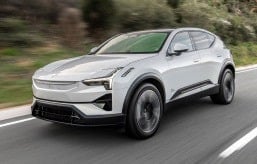
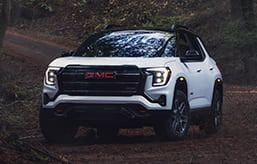

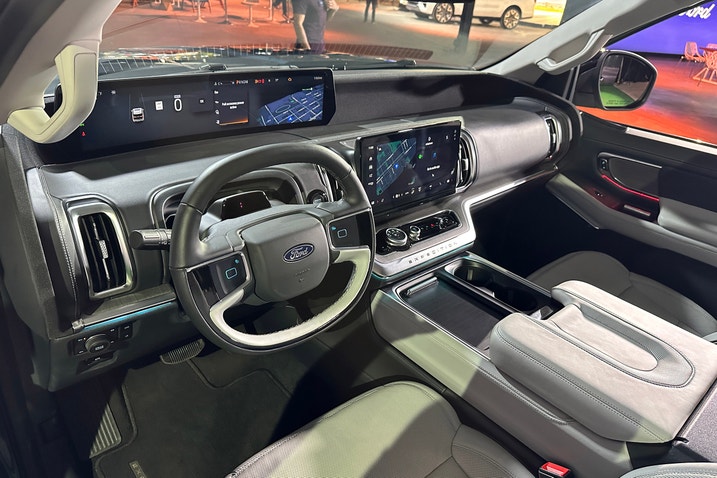
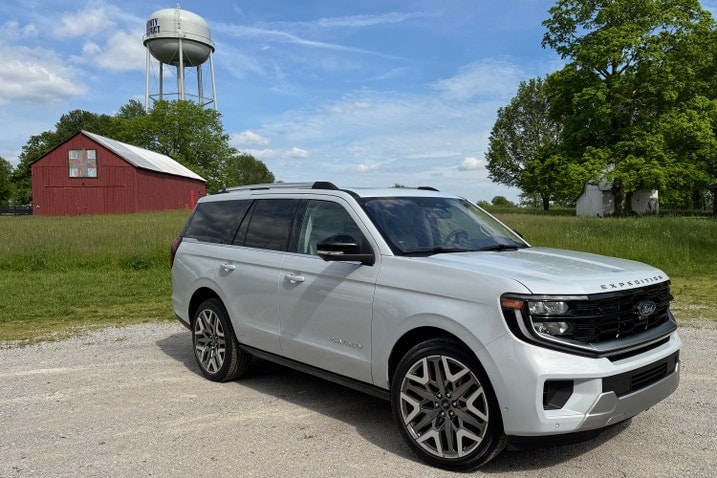
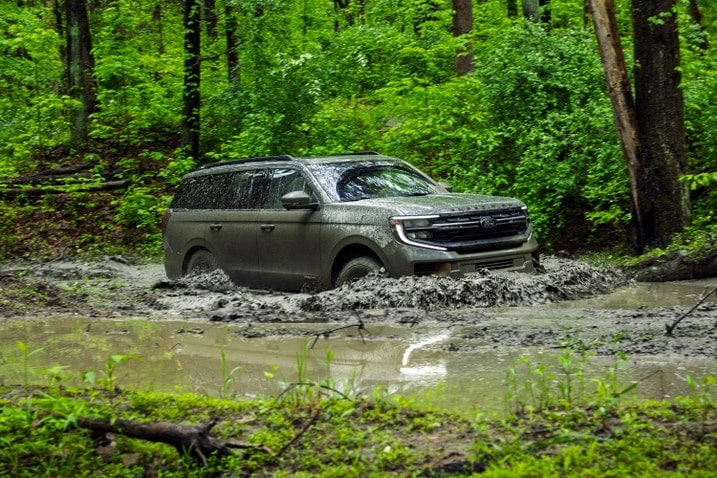
 by
by  edited by
edited by